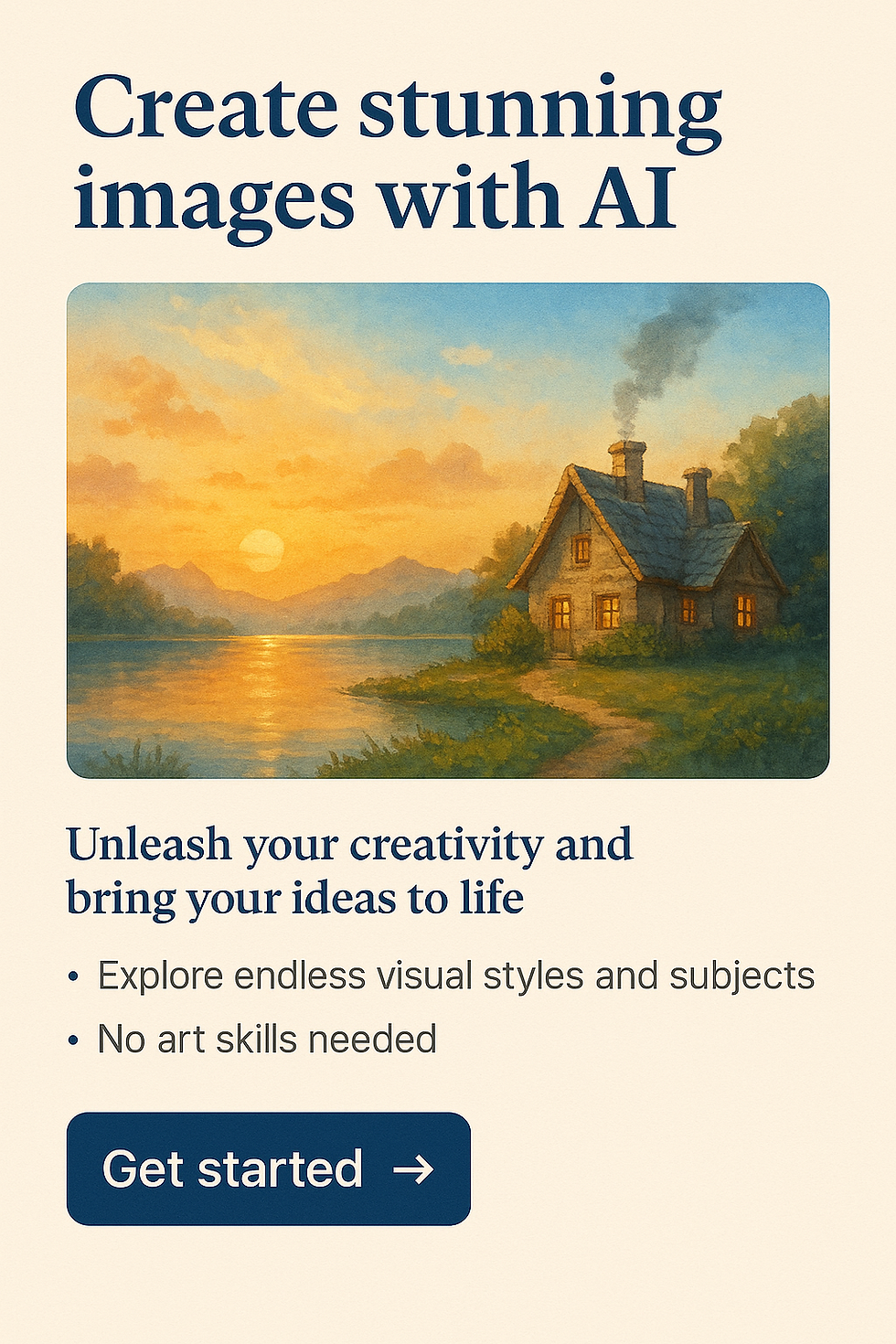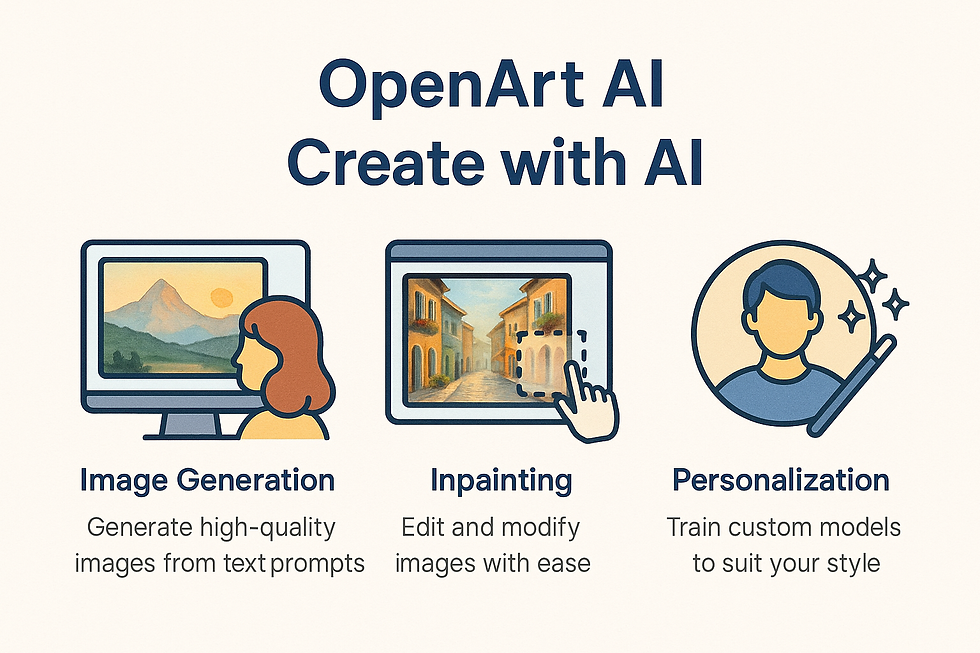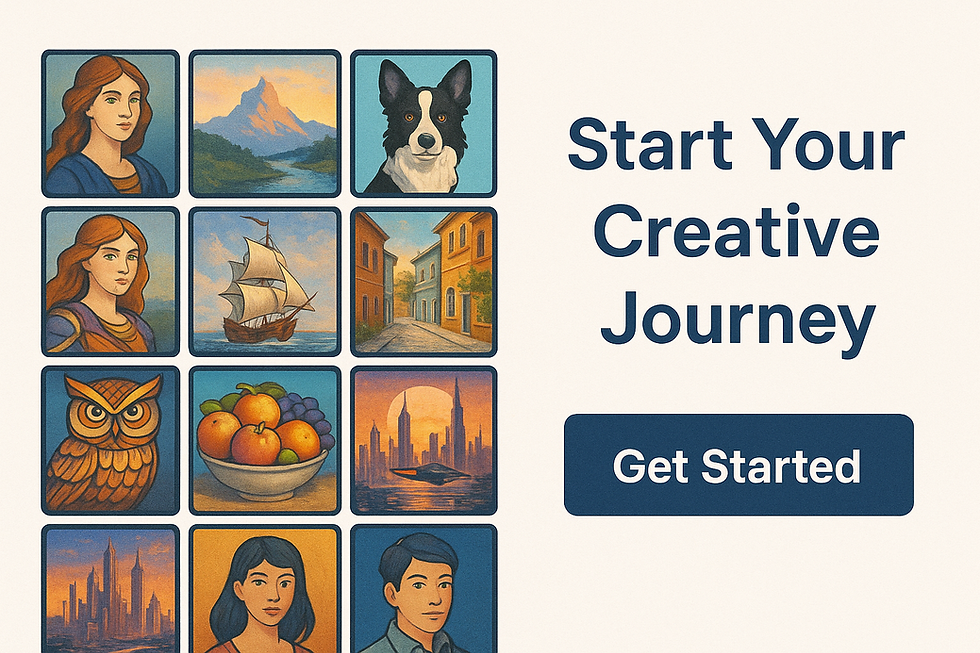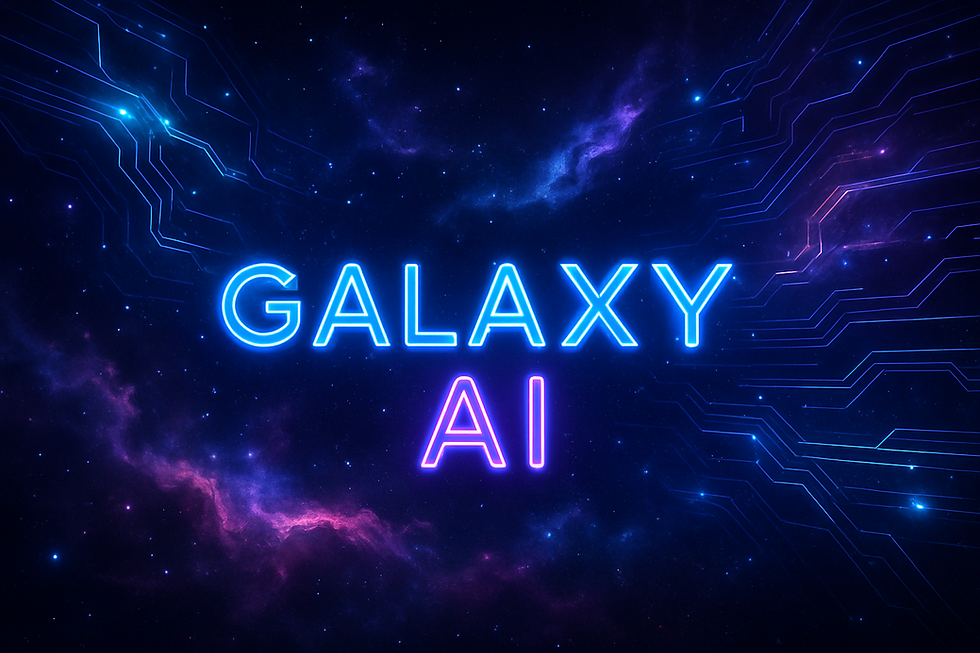OpenArt AI: The Future of Creativity Is Here 🎨✨
- John J Peterson
- a few seconds ago
- 5 min read

Artificial Intelligence is reshaping the way we live, work, and create. In particular, AI-powered art platforms are revolutionizing how we visualize ideas. Instead of needing years of practice with brushes, pencils, or digital design software, now you can generate unique visuals with just a few words.
One of the most exciting tools leading this wave is OpenArt AI — a platform built to make art generation accessible, customizable, and surprisingly powerful. Whether you’re an artist, a content creator, a storyteller, or simply someone who wants to explore new creative frontiers, OpenArt offers a way to bring your imagination to life.
Today, we’ll dive into everything you need to know about OpenArt AI — what it does, how it works, its best features, and how you can start experimenting with it today. And yes, if you’re curious and want to try it out, here’s my affiliate link:

What is OpenArt AI?
At its core, OpenArt AI is a text-to-image platform. You type in a description — for example, “a watercolor painting of a cottage by a glowing lake at sunset” — and within seconds, the AI transforms that description into a unique visual.
But it doesn’t stop there. Unlike many “basic” AI art tools, OpenArt AI provides multiple modes of creativity:
Text-to-image: Start from scratch with just words.
Image-to-image: Upload an image and transform it into a new style.
Inpainting: Edit parts of an image — for example, replace a background or fix a detail.
Upscaling: Improve quality, add details, and increase resolution.
Custom models: Train or use community models to create very specific looks.
This makes OpenArt more than just a one-click image generator. It’s closer to a creative studio powered by AI, designed for artists and non-artists alike.

Why OpenArt Stands Out in the AI Art Space
There are dozens of AI art generators today, from Stable Diffusion to MidJourney and DALL·E. So why should OpenArt AI be on your radar?
Here are a few reasons it’s worth paying attention to:
1. Flexibility and Depth
OpenArt doesn’t limit you to a single mode of creation. Want a fast prompt-to-picture tool? Done. Want to refine and edit images for professional projects? Also possible. This makes it a great choice for both casual experimentation and serious design work.
2. Accessible for Beginners
The platform is built to be intuitive. You don’t need to understand complicated prompt engineering or technical settings. With their interface, you can quickly type a description, click generate, and get a result. Yet, advanced users can tweak and refine for more control.
3. Huge Model Library
OpenArt provides access to a wide variety of models — including custom-trained styles uploaded by the community. That means you can find a model tailored to anime, oil painting, cyberpunk photography, Pixar-like 3D, and more.
4. Editing Beyond Generation
Unlike tools that stop after creating an image, OpenArt lets you refine. You can:
Remove or change backgrounds.
Fix faces and hands (a known weak spot in AI art).
Upscale low-res results into high-quality outputs.
5. Community & Learning
OpenArt has built a community where users share prompts, results, and tips. This makes it easy for new users to learn what works and get inspired by others’ creations.
How to Get Started with OpenArt AI
If you’re new to AI art, getting started with OpenArt is simple:
Sign up for freeYou don’t need a credit card to begin. Just create an account and start generating.👉 Sign up here
Choose your toolDecide whether you want to start with text-to-image, upload an image, or try a model from their library.
Write your first promptA simple example: “a fantasy castle on a mountain peak, painted in impressionist style.”
Generate & refineThe AI gives you results in seconds. If you don’t like the first one, adjust your prompt or try variations.
Explore editsUse tools like background removal, inpainting, or upscaling to polish the image.
Within 5 minutes, you’ll have your first piece of AI-generated art.

OpenArt AI Features in Detail
Let’s break down some of the features more thoroughly.
🎨 Text-to-Image
Turn plain words into stunning art.
Works across multiple styles — photorealism, anime, digital painting, abstract, 3D renderings, etc.
Great for brainstorming, prototyping, or simply having fun.
🖼️ Image-to-Image
Transform an uploaded photo or sketch into something entirely new.
Example: Upload a portrait, then convert it into a Van Gogh painting.
🖌️ Inpainting & Outpainting
Perfect for “fixing” AI results or customizing parts of an image.
Example: Replace the sky, add an object, or remove unwanted elements.
🔍 Upscaling
Turn smaller, low-res generations into high-quality final images.
Ideal if you want to use the art for printing, posters, or large digital projects.
🤖 Custom Models
Train your own AI model for consistent results.
Useful if you want a specific character, style, or brand look across many images.
Use Cases for OpenArt AI
So what can you actually do with OpenArt? Here are some real-world scenarios:
Content Creation
Thumbnails for YouTube
Backgrounds for TikTok/Instagram videos
Blog illustrations
Memes and social media visuals
Storytelling & Worldbuilding
Authors and scriptwriters can create visuals of characters and scenes.
Game designers can draft environments and concept art.
Marketing & Branding
Ad mockups
Website visuals
Branded assets in specific styles
Personal Projects & Fun
Create custom gifts
Unique wallpapers
Posters or prints
Pricing & Plans
OpenArt AI has a free tier, making it easy to test-drive the platform. You’ll get a set of credits to play around with.
For more intensive use, there are premium plans. These include:
Higher-resolution outputs
More credits for generations
Access to premium models & features
Pricing is competitive compared to other AI art platforms, especially considering the built-in editing tools.
Things to Keep in Mind
No platform is perfect, so it’s important to know the potential downsides:
Subscription Terms: Some users online have mentioned issues with cancellation or refunds. Make sure to read the terms before upgrading.
Output Variability: Not every generation is perfect. Sometimes results can be strange or need refinement.
Ethics & Copyright: Like with all AI art tools, think carefully about how you use the work, especially commercially.
That said, OpenArt gives you a lot of control and editing options, which helps overcome many of these limitations.
How Does OpenArt Compare to Competitors?
MidJourney: Known for stunning aesthetics but runs mainly through Discord, with less editing flexibility.
DALL·E 3: Integrated into ChatGPT, good for general use but not as feature-rich as OpenArt.
Stable Diffusion (raw): Powerful but requires more technical setup.
OpenArt’s advantage is its mix of usability + customization. You get advanced tools without needing to code or install complex software.
Final Thoughts: Should You Try OpenArt AI?
If you’ve been curious about AI-generated art but felt overwhelmed by technical barriers, OpenArt is a fantastic entry point. It combines ease of use with serious creative power.
You don’t have to be a professional designer or a tech wizard — you just need an idea and the willingness to experiment. From social media visuals to storytelling, OpenArt can save time, spark creativity, and give you results that would’ve taken hours (or days) to produce by hand.
And the best part? You can start for free, with no risk.




Comments